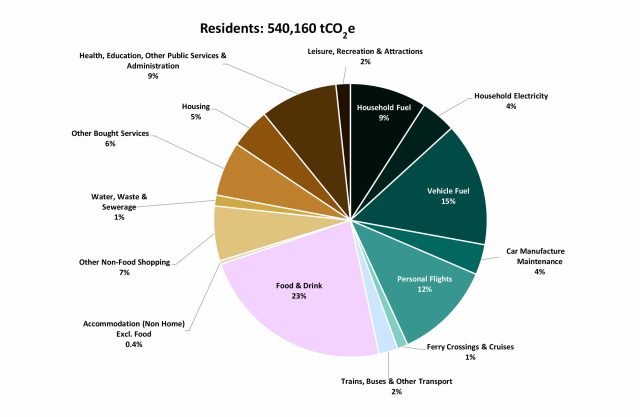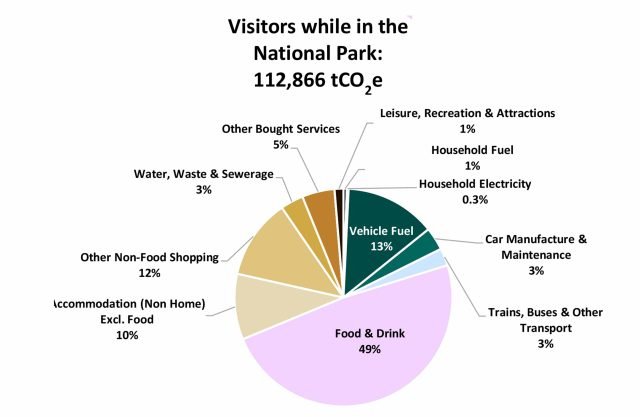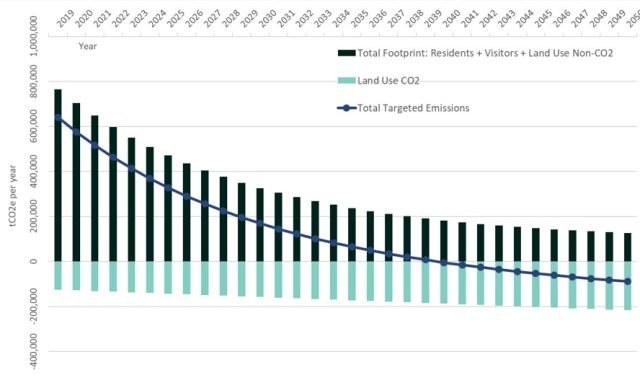The New Forest boasts an impressive array of uncommon and special butterfly species. Being...
Net zero with nature programme
What is Net Zero with Nature?
We’ve made a commitment to work with partners and communities to make the National Park ‘net zero with nature’ by 2050, as well as working to become a net zero organisation by 2030.
| Net zero is achieved when any harmful greenhouse gas emissions are balanced by an equivalent amount being absorbed by nature. |
The New Forest is one of the most important places for nature conservation in Europe. Since nature restoration has been recognised as critical to tackling climate change, we want to ensure our efforts to reach net zero recognise the role nature can play. This is why our programme is named ‘Net Zero with Nature’.
Framework for action
Our framework for action on climate change explains our plan as a National Park Authority (NPA) to drive forward progress towards net zero, beyond our organisational boundaries.
- Help support the rapid transition to a low-carbon economy for land-based sectors, ensuring that land use change delivers sustainable land management, and improvements to soils/increased carbon sequestration.
- Demonstrate how nature-based solutions can help develop resilience to climate change at a landscape scale.
- Use our planning powers to deliver highly sustainable homes and raise the bar in terms of design and build standards via the use of incentives.
- Promote sustainable tourism and demonstrate the benefit of ‘low carbon’ holiday destinations, thereby spreading positive lifestyle messages.
- Use the full range of NPA skills and resources to encourage climate action at strategic, landscape and local community levels.
- Advocate for policy change and partnership working.
- Develop pilot projects that demonstrate how to finance climate mitigation actions through carbon off-setting schemes and support National Park Partnership’s Net Zero with Nature proposal.
- Use our convening power to energise a coalition of the willing to take forward our vision.
Reaching Net Zero – a report for the New Forest National Park
We commissioned a report on how the New Forest National Park can reach net zero, thereby improving our resilience to climate change.
The report outlines:
- where emissions arise in the National Park
- the emission reductions that will safeguard against run away climate change
- recommendations for how everyone who has a stake in the National Park can achieve impact.
The report is an empowering resource and we are working to bring it to the attention of stakeholders to galvanise local action and build local resilience to climate change.
Report highlights
- The report highlights the role residents, visitors to the National Park, local organisations and businesses can play in building climate resilience locally.
- Given the National Park is one of the most important places for nature in Europe, the report has a special focus on the part the land management sector can play in building local resilience to climate change.
- It reveals the carbon emissions associated with all residents’ lifestyles in the National Park. It highlights that food and drink are the largest source of emissions associated with residents’ lifestyles and taking action to reduce emissions from food and drink are a good area for residents to prioritise action in and achieve impact.
- The same holds true for visitors. Food and drink are the largest source of emissions associated with visitor trips to the National Park. Taking action to reduce emissions from food and drink therefore are a good area for visitors to prioritise action in and achieve impact.
- The report highlights which sectors are the most carbon intensive in the National Park, and therefore highlights which ones could potentially make the biggest contributions to achieving net zero.
- The report demonstrates changes made to the way land is managed could result in the National Park removing more emissions from atmosphere annually than it produces. This would make the National Park carbon positive and a net contributor to achieving the UK’s net zero targets.
- The report concludes by listing the areas that can play a key role in building resilience – construction, home energy, food production and diets, travel and transport, business energy use, tourism and the visitor experience, the material economy (including repair, maintenance, renting and reselling of consumer goods), and land management. This is empowering by highlighting that everyone can have an impact.
The carbon impact of residents’ lifestyles

The graph reveals the carbon emissions associated with all residents’ lifestyles in the National Park.
It highlights that food and drink (23%) followed by vehicle fuel (15%) are the largest sources of emissions associated with residents’ lifestyles. Taking action to reduce emissions from these areas therefore are good areas for residents to prioritise action in and achieve impact.
The carbon impact of visitors whilst in the National Park
 Food and drink are the largest source of emissions associated with visitors whilst in the National Park (49%, with vehicle fuel second at 13%).
Food and drink are the largest source of emissions associated with visitors whilst in the National Park (49%, with vehicle fuel second at 13%).
Again, taking action to reduce emissions from food and drink therefore are a good area for visitors to prioritise action in and achieve impact.
Land use

The graph demonstrates land has an important part to play in delivering net zero and building climate resilience locally. It shows the potential for the National Park to remove emissions from the atmosphere and the important contribution it can make towards meeting the UK’s net zero targets.
The graph demonstrates changes made to the way land is managed could result in the National Park removing more emissions from the atmosphere annually (green bars) than it produces (black bars). This would make the National Park carbon positive and a net contributor to achieving the UK’s net zero targets.
The report sets out the actions required to achieve these carbon removals.
| Proposed Land Use Targets | Value | Units |
| New native broadleaf / mixed woodland | 70.0 | ha per year |
| New productive coniferous woodland | 0.0 | ha per year |
| Restored peatland | 160.3 | ha per year |
| Agroforestry (improved grassland & cropland) | 33.9 | ha per year |
| New hedgerows (improved grassland & cropland) | 1.9 | ha per year |
| Legumes (improved grassland) | 230.9 | ha per year |
| Cover cropping (cropland) | 32.5 | ha per year |
Our work on net zero
1. Quantifying carbon stored and sequestered in the Park’s natural environment
We are one of the first National Parks to have conducted a Natural Capital Baseline Assessment which has provided us with an assessment of the carbon stored by habitat and the rate at which habitats are sequestering carbon annually. This helps understand the carbon dynamics of our habitats and therefore the role they can play in helping us reach net zero.
The assessment details the carbon stored in vegetation and the top 30cm of soil, as well as the carbon sequestration rate (the rate at which carbon is removed from the atmosphere) for vegetation.
Further work is needed to build a complete picture of carbon stored and sequestered in the National Park, particularly data on carbon stored in saltmarsh sediments, deeper layers of soil and sequestration rates in soils.
We will work with partners to investigate how this additional data can be attained. This will enable us to quantify the impact of nature-based climate solutions we implement.
2. Implementing nature-based climate solutions
Nature-based climate solutions applicable to the New Forest context have been identified and we are working with partners to implement these.
Solutions include:
- Peatland restoration
- Tree planting
- Woodland preservation
- Heathland and grassland preservation
- Water quality improvements
- Saltmarsh preservation/regeneration
- New farming techniques.
Researchers at the University of Southampton consider the location, extent, depth and condition of peat in the New Forest to be poorly mapped. We, in collaboration with partners, are investigating therefore how an accurate map of peat in the New Forest might be produced that will highlight areas of peat in need of restoration.
3. Supporting land managers to tackle climate change
We’re delivering Defra’s Farming In Protected Landscapes (FiPL) grant programme in the New Forest. It supports farmers and land managers to carry out projects that amongst other things mitigate the impacts of climate change.
Climate is one of the programme’s four themes and funding is available to help farmers implement climate mitigation activities such as hedgerow or tree planting.
Please contact us if you would like advice on the range of activities that could be funded.
4. Raising the investment required
We are at the forefront of action to understand how private finance markets might help fund land-based climate change mitigation projects – something that is needed to tackle the climate and nature crisis at the scale and pace required.
Through the Natural Environment Investment Readiness Fund (NEIRF), we, in partnership with Palladium through the Revere initiative, modelled potential income streams available to land managers/owners for providing ecosystem services such as carbon sequestration (removing carbon from atmosphere).
This has helped reveal the role private finance can play locally in funding land-use changes that support climate change mitigation and nature recovery.
5. Planning
A revised Design Guide for building development in the New Forest National Park has been produced.
It provides guidance on materials to use in new development which can help tackle climate change.
A new section on sustainability includes ‘green’ measures which can be incorporated, while respecting the environmental protections and local character of the New Forest National Park.
These include:
- native planting
- the use of energy efficiency measures in new buildings
- using locally sourced materials.
6. Supporting communities
We’re working with our communities in and around the National Park.
Get involved in:
- the New Forest Climate and Nature Challenge
- Pledge
- Awakening Festival
- all backed up by the Sustainable Communities Fund.
We have also set up a monthly session for local green groups to come together, promote their work and learn from each other, as well as benefit from the NPA’s expertise in tackling climate change and driving nature recovery.
These sessions are open to everyone and please get in contact with us if you would like to get involved.
7. Working with partners
Working towards net zero is one of the key themes of the Partnership Plan to 2026 – the main strategic document highlighting actions for all organisations with a remit for caring for the National Park.
Greenprint: We’ve worked with partners to develop a ‘Greenprint’ for south Hampshire – to drive a green recovery and develop a more prosperous, fair, resilient and environmentally aware society. It’s a framework for policymaking, collaboration and co-operation with five themes, one being net zero.
Revere: We and the 14 other UK National Parks have joined with global impact firm Palladium to creating a sustainable funding model for nature restoration at scale to tackle the climate emergency and biodiversity crisis. Revere aims to catalyse private finance and help secure almost £240 million for vital nature restoration projects needed in national parks by 2030.
Franchises Lodge nature reserve: We invested £200,000 to help the RSPB acquire this 1,000-acre site in the north of the New Forest in 2018 and improve its value for wildlife. It’s an extremely rare chance to turn a huge piece of the north of the National Park into a special place for nature, making the Forest bigger, better for nature and more joined-up thereby building the National Park’s resilience to climate change
Higher Level Stewardship scheme: England’s largest environmental scheme has been operating since 2010 and seen £22 million invested in the Forest to restore and enhance its internationally important habitats. Successes include returning 20 miles of streams which were artificially straightened in Victorian times to drain the Forest back to their natural water courses. This improves the carbon storage in wetlands, prevents flooding and supports the habitats of rare species such as the southern damselfly and curlew.
Green and blue horizons from city to Forest: We’re leading this multi-partner scheme which brings an £800,000 investment into the New Forest awarded in 2021. The project kickstarts action to confront the twin climate and nature emergencies with programmes to restore habitats, begins our path towards net zero with nature, and helps new and diverse audiences connect with the New Forest.
Green Halo Partnership: The National Park Authority convenes a partnership of businesses, communities, charities and universities to ensure our world class environment in and around the New Forest National Park flourishes as an integral part of how we work and live.
8. Increasing sustainable travel
We are working to increase sustainable travel through a number of initiatives in partnership with others. Initiatives include:
- Producing and delivering an agreed New Forest Local Cycling and Walking Infrastructure Plan (LCWIP)
- Campaigning for lower speed limits across the Forest where appropriate and evidenced, to secure quieter, slower and reduced traffic impacts
- Developing a more coordinated and integrated approach to sustainable transport through the relevant Local Transport Plans and by developing a New Forest Transport Strategy
- Supporting bids for schemes that enable us to decarbonise the transport system.
Find out more
From our Net Zero with Nature Programme Manager:
NFNP greenhouse gas emissions
Newsletter
6
Free
Six free walking routes when you sign up for New Forest Newsletter


